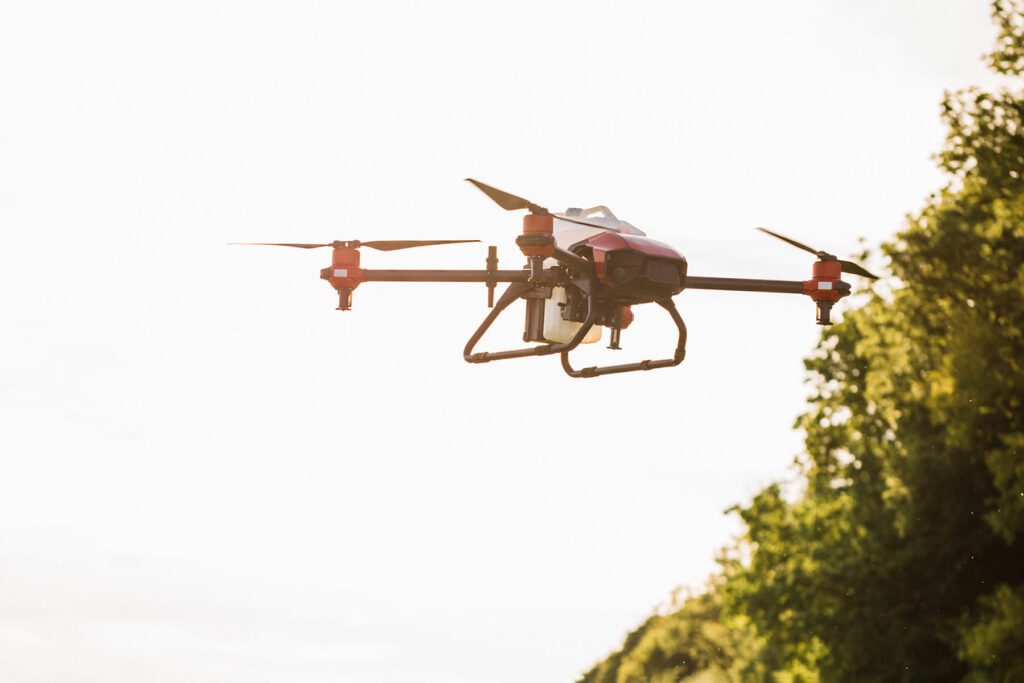Authors
Above the vast patchwork of fields carpeting the UK, a silent revolution is unfolding in the skies. Unmanned Aerial Vehicles (UAVs), once confined to military applications and hobbyist pursuits, are being developed for new commercial purposes.
During the coronavirus pandemic, UAVs and drones gained attention for their trialled use by the medical sector, focused on the use of drone technology to deliver medical supplies to patients across Scotland. That organisation has now turned to the development and trial of the UK’s first national network of UAV/drone flight corridors, designed to connect hospitals, labs, GP surgeries and distribution centres.
Similar UAV/drone corridors are also under development in other sectors including logistics and agriculture. With the imminent arrival of widespread commercial use of UAV/drone technology, we consider the myriad legal considerations for private landowners.
Who owns the air above land?
Does a landowner have exclusive ownership of airspace rights over their land? Thirteenth century case law provided that a landowner owned their land “all the way to Heaven and all the way to Hell”. This very literal interpretation of ownership over the vertical column above one’s land cannot persist into the 21st century with the dawn of aircraft, satellites and drones.
The law changed in the 1970s[1] in a case involving an unmanned aircraft deployed to photograph homes with the aim of selling the photographs to homeowners.
The courts determined that landowners’ rights extended to such a height as is “necessary for the ordinary use and enjoyment of their land”.
Trespass and nuisance
UAV operators must obtain a landowner’s permission to land or take off on their land. It is less clear whether the act of flying a UAV over someone’s land amounts to trespass or nuisance in and of itself. It will likely depend upon the extent to which peaceable enjoyment of the landowner’s property is affected (height and frequency of activity, duration, noise, hovering etc.) having regard to the activity taking place on the ground.
Current legislation indicates that UAV users are exempted from liability where an operator pilots their drone over a person’s land in a reasonable manner, at a reasonable height, and in compliance with all other relevant laws and regulations (see s.76(1) Civil Aviation Act 1982). Of course, the meaning of reasonable is open to interpretation and is yet to be properly tested by the courts.
In addition, all UAVs must be flown in accordance with a general duty not recklessly or negligently to cause or permit them to endanger any person or property.
A landowner is more likely to have an actionable claim where a person causes a UAV to engage in an activity which could be considered a trespass or nuisance, such as landing without permission or causing property damage or personal injury.
Owners or operators of drones will be held to strict liability (liable regardless of one’s intention) for any surface damage, personal injury or damage to a person’s property caused by a drone[2].
Liability is channelled through the owner or operator of the drone and, unless the injury or damage is as a result of the victim’s own negligence, the victim must be compensated.
If a person intentionally or recklessly hits someone or their property with a UAV, they could also be liable for a criminal offence such as battery or criminal damage.
The Civil Aviation Authority (CAA) is the UK’s primary statutory regulator for aviation, including UAVs. Most prosecutions against errant drone operators are conducted by the CAA, although the police have taken an increasingly active role in pursuing prosecutions against individuals.
It should be noted that landowners can also be held responsible for accidents that take place on their land if they have given the drone operator permission to take off or land on their property.
Data protection and privacy
Landowners are also likely to be concerned about the risks UAVs pose to their privacy, particularly those with sophisticated cameras and sensors which process personal data. This may lead to confidentiality and privacy issues if a drone captures footage of, for example, people, vehicles or signage over land.
In the UK, processing of personal data is subject to the GDPR and Data Protection Act 2018. The Information Commissioner’s Office (ICO) is the UK data protection regulator in charge of enforcing legal requirements. Any drone with a camera should be registered with the CAA. Where a drone operator contravenes data protection rules, the ICO can pursue enforcement action, including fines.
What can landowners do if they are affected by UAVs/ drones?
It can be difficult for landowners to regulate unwanted UAV/drone behaviour. However, there are a number of things they can do. Collecting good records and evidence such as recordings and photos of drone use can be helpful. Reporting incidents to the police and making enquiries of the CAA should also be considered. In more persistent cases, landowners can employ drone tracking technologies. Concerned landowners may also want to register their land as a no-fly zone with the No Fly Drones website.
[1] Bernstein of Leigh v Skyviews & General Ltd [1978] 1 QB 479
[2] Section 76 (2) Civil Aviation Act 1982


